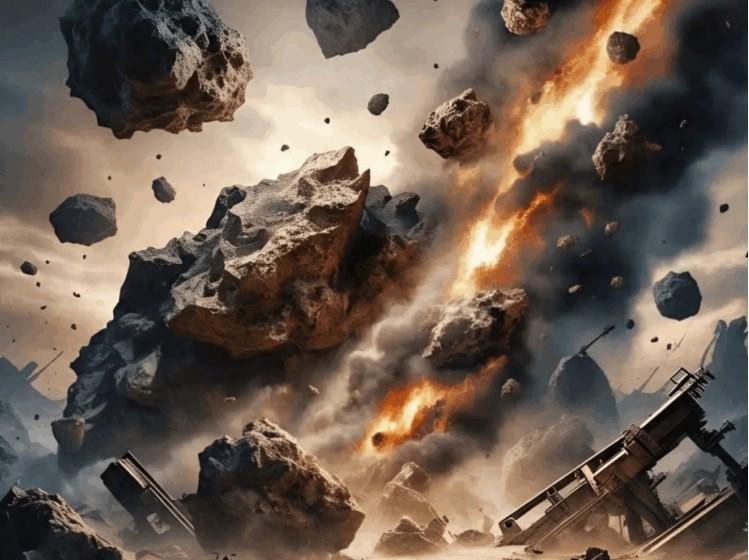
Earth to Face Two Asteroid Threats by 2032: How Safe are We?
The vast expanse of space is home to countless celestial bodies, including asteroids that have the potential to pose a threat to our planet. As we navigate the universe, it’s essential to stay informed about potential asteroid encounters and their potential impact on our world. In this regard, recent reports suggest that Earth will face two significant asteroid threats by 2032, prompting concerns about the safety of our planet, astronauts, and satellites.
Asteroid Apophis: A Near-Miss in 2029
The first asteroid on our radar is Apophis, a massive space rock estimated to be approximately 1,100 feet in diameter. In 2029, Apophis will make a close approach to Earth, passing within a mere 19 million miles (31 million kilometers) of our planet. While this may seem like a safe distance, Apophis’ size and proximity to Earth make it a significant concern for astronomers and space experts.
Apophis is classified as a potentially hazardous asteroid (PHA), meaning it has a minimum orbital intersection distance with Earth of less than 0.05 astronomical units (AU). One AU is the average distance between the Earth and the Sun, so Apophis’ close approach in 2029 will put it within about 4.5 times the distance between the Earth and the Moon.
Asteroid YR4: A Potential Moon Strike and Debris Threat
The second asteroid threat on the horizon is YR4, a smaller but still significant space rock estimated to be around 1,000 feet in diameter. In 2032, YR4 will make a close approach to Earth, but unlike Apophis, it’s expected to pass much closer to our planet. In fact, YR4 could potentially strike the Moon, sending debris hurtling towards Earth.
This debris could pose a significant threat to both satellites and astronauts in space. If YR4 were to strike the Moon, it could create a massive cloud of debris, including rocks and dust, that could travel through space and potentially damage or destroy satellites in orbit. This, in turn, could have significant consequences for our global communication and navigation systems.
Asteroid Impacts: A Rare but Inevitable Risk
While the likelihood of direct impacts from Apophis and YR4 is low, asteroid impacts remain an inevitable risk that experts stress is difficult to eliminate. The fact is that asteroids have collided with Earth throughout its history, playing a significant role in shaping our planet’s evolution.
The most well-known example of an asteroid impact is the Chicxulub asteroid that struck Earth around 65 million years ago, leading to the extinction of the dinosaurs. More recently, the Chelyabinsk meteor that exploded over Russia in 2013 injured over 1,000 people and caused significant damage to buildings and infrastructure.
Global Efforts to Track and Deflect Space Hazards
In response to the growing threat of asteroid impacts, global efforts are underway to track and deflect space hazards. The United Nations Office for Outer Space Affairs (UNOOSA) has established the United Nations Committee on the Peaceful Uses of Outer Space (COPUOS) to promote international cooperation in space exploration and development.
The European Space Agency (ESA) and NASA have also launched initiatives to detect and track near-Earth asteroids. The ESA’s Space Situational Awareness program aims to monitor the orbits of asteroids and provide early warnings in the event of a potential impact. NASA’s Near-Earth Object Program is similarly focused on detecting and tracking asteroids that could pose a threat to our planet.
Conclusion: Staying Safe in a Threatening Universe
As we continue to explore and expand our presence in space, it’s essential to acknowledge the potential risks and threats posed by asteroids. While the likelihood of direct impacts from Apophis and YR4 is low, it’s crucial that we remain vigilant and prepared for any eventuality.
By staying informed about asteroid encounters and supporting global efforts to track and deflect space hazards, we can minimize the risk of harm to our planet, astronauts, and satellites. As we move forward into the unknown, it’s clear that our collective safety and well-being depend on our ability to navigate the vast expanse of space with caution and precision.






